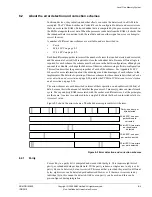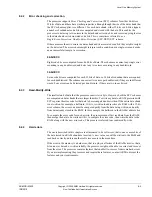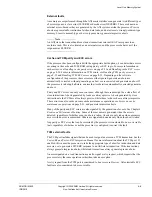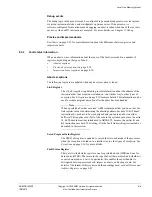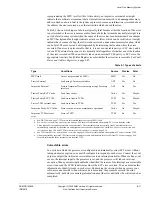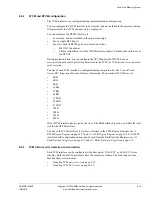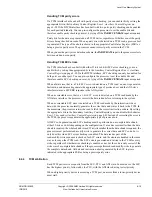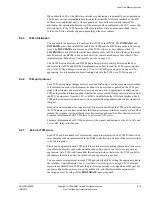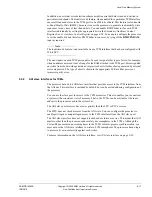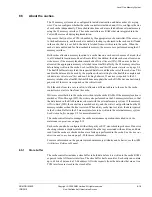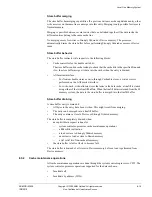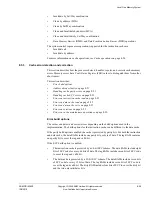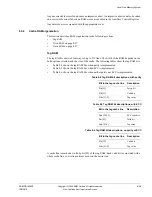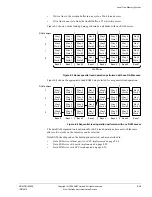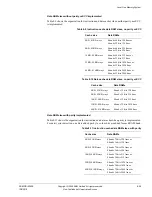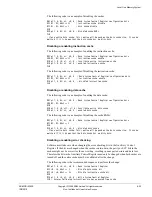
Level One Memory System
ARM DDI 0363E
Copyright © 2009 ARM Limited. All rights reserved.
8-17
ID013010
Non-Confidential, Unrestricted Access
In addition, an external error detection scheme might require that data is read and written in
particular sized chunks. The load/store-64 feature, when enabled for a particular TCM interface,
causes all loads and stores to the TCM ports to be of 64-bits of data. This feature is also known
as
Read-Modify-Write
(RMW), because it causes the processor to generate read-modify-write
sequences for any store of less than 64-bits. You can enable RMW behavior for each TCM
interface individually by setting the appropriate bits in the Secondary Auxiliary Control
Register. See
c1, Auxiliary Control Register
on page 4-38. You can pin-configure the processor
to set the enable bits and therefore RMW behavior on reset, by tying off the
RMWENRAM
input as required.
Note
The load/store-64 feature is not available on any TCM interface that has been configured with
32-bit ECC.
The error inputs on each TCM port can also be used to signal other types of error, for example,
when an address accessed is out of range for the RAM attached to the TCM port. Errors signaled
on writes from the data-side generate an imprecise abort. All other aborts generated by external
errors are precise. The type of abort is shown in the appropriate FSR as either precise or
imprecise parity error.
8.4.8
AXI slave interfaces for TCMs
The processor has a 64-bit AXI slave interface that provides access to the TCM interfaces from
the AXI bus. This interface is included by default, but can be excluded during configuration of
the processor.
You can use the slave port for access to the TCM memories. This also enables you to construct
a system with a consistent view of memory. That is, the TCMs can be available at the same
address to the processor and to the system bus.
The AXI slave port accesses have lower priority than the LSU or PFU accesses.
The MPU does not check accesses from the AXI slave. You can configure the processor to
enable privileged or nonprivileged access to the TCM interfaces from the AXI slave port.
The AXI slave interface does not support locked and exclusive accesses. This means that AXI
masters, other than the processor, cannot safely use semaphores in the TCMs. Although the
Cortex-R4 processor can use semaphores in the TCMs for inter-process synchronization, you
must not use the AXI-slave interface to write to TCM semaphores. The processor has no logic
to preserve its own exclusivity against such writes.
For more information on the AXI slave interface, see
AXI slave interface
on page 9-20.


